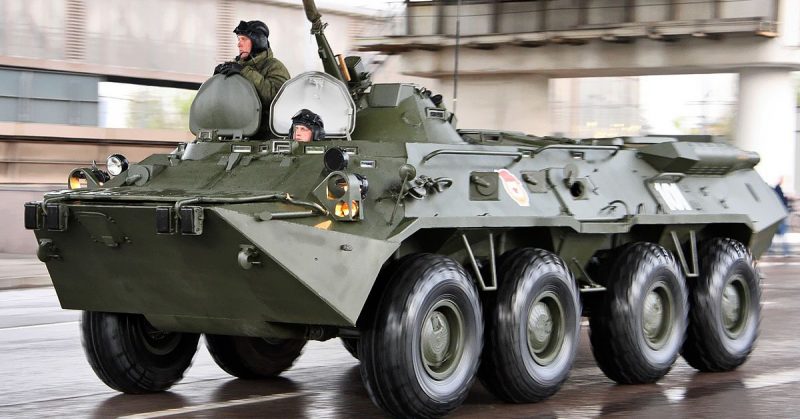Mechanized infantry was the core of Soviet fighting forces during the Cold War. Armored personnel carriers (APCs) were key to getting these troops around. Even after the arrival of harder hitting BMP infantry fighting vehicles in the 1960s, APCs remained in service, as they were cheaper to produce and maintain.
BTR-40
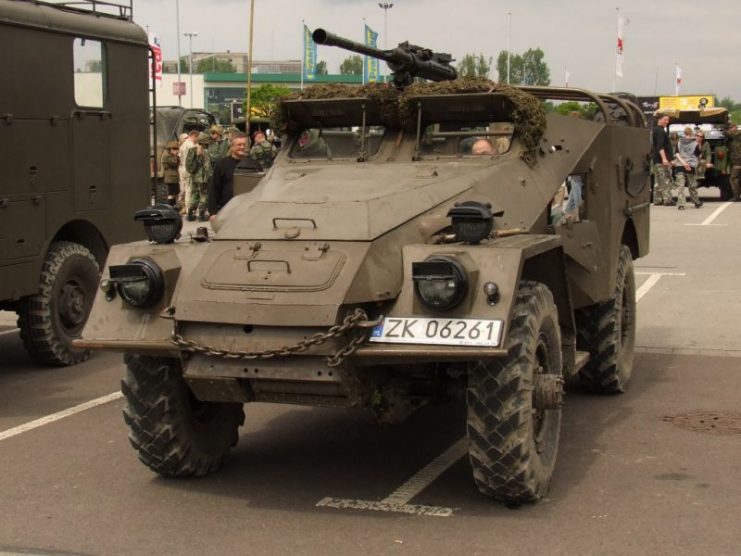
The Soviet Union’s first APC to enter mass production, the BTR-40 reached armies in 1950. It was based on the chassis of a GAZ-63 lorry.
The commander and driver sat in the front of the vehicle, with eight soldiers behind them. The rear area was accessible through a pair of doors at the back, but it had no roof – just a tarpaulin to protect the men from bad weather. The front and sides of the troop compartment carried mounts for three 7.62mm SGMB machine guns.
Having wheels instead of tracks made the BTR-40 relatively cheap to produce and maintain but reduced its ability to get around off-road.
BTR-152
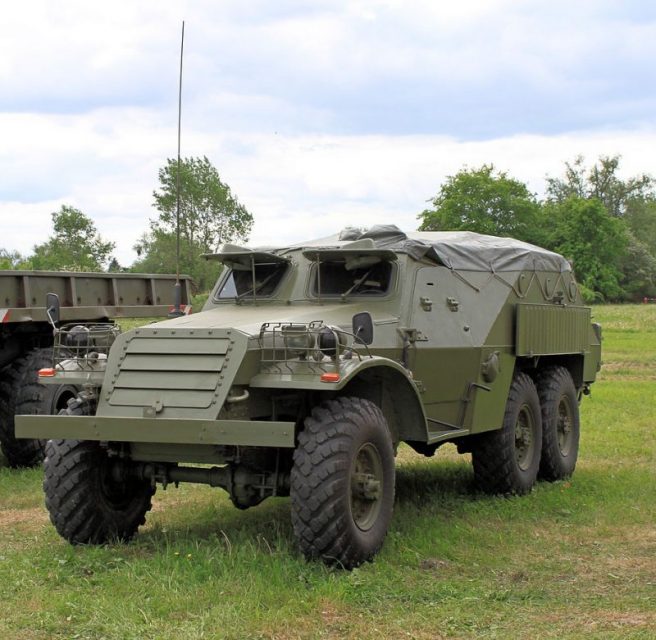
Based on a 6×6 lorry chassis, the BTR-152 entered service in 1950. In many ways, it was similar to the BTR-40. It traveled using wheels rather than tracks and had an open-top troop compartment, with two doors providing access at the rear of the vehicle. Again, there were three mounts for machine guns – one at the front and one on each side. These could all carry 7.62mm SGMB guns, though the front mount could instead carry a heavier 12.7mm DShKM.
The main difference from the BTR-40 was one of scale. The BTR-152 could carry up to 17 men. Eight firing ports along the sides and rear of the vehicle let them fire out at enemies while remaining in the protection of the vehicle.
BTR-50
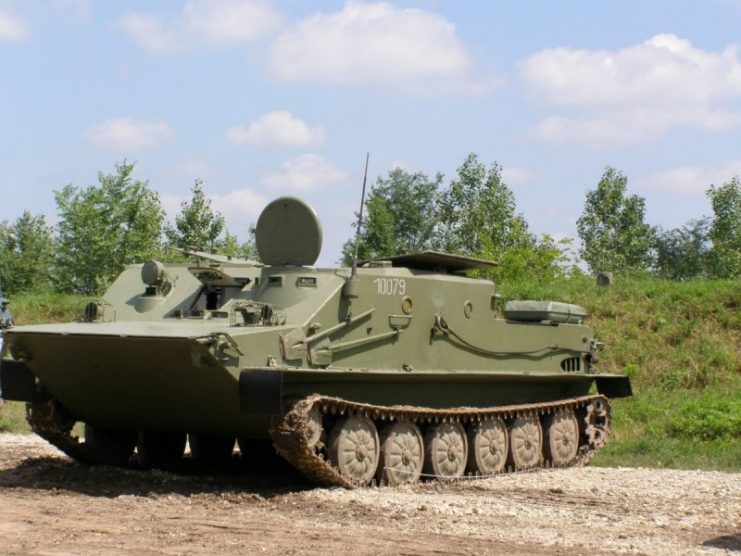
Introduced in 1954, the BTR-50 was based on a PT-76 tank instead of a civilian vehicle. The driver and commander sat in the front, with a heavy machine gun mounted between them, while up to 20 infantrymen sat in a compartment at the back. At first, they had no roof to protect them, but a solid hatched roof was soon added. A rear ramp allowed the vehicle to carry a light field gun or anti-tank gun instead of some of the infantry.
Being adapted from a tank, the BTR-50 had tracks instead of wheels. It also had its engine and transmission at the rear. This meant that the troops had to climb across the engine to get out.
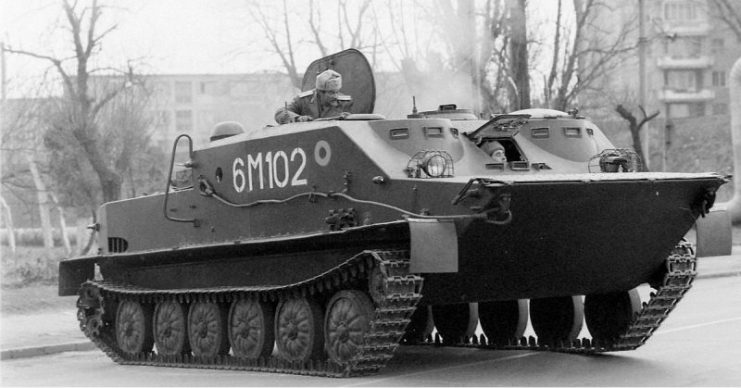
This vehicle was amphibious, able to progress through the water using water jets. Even while swimming, guns could be fired from its rear deck.
The BTR-50 became the standard infantry transport for tank divisions, retaining this role until it was replaced by BMPs. Twenty-one of these vehicles were still in Soviet service at the end of the Cold War.
BTR-60
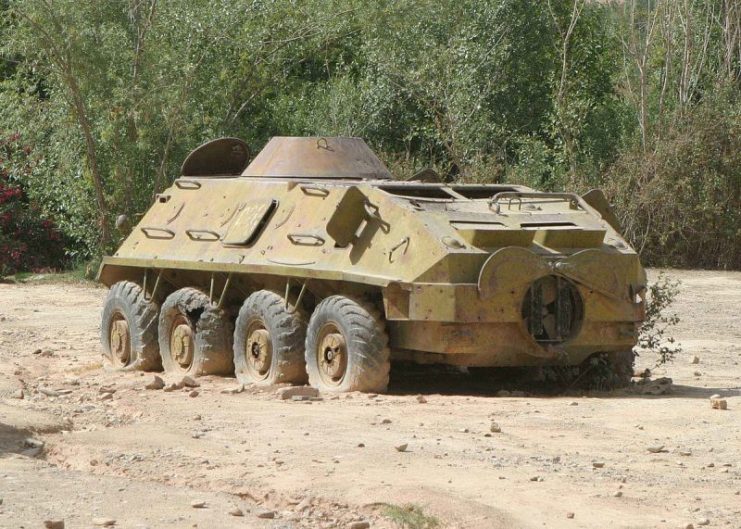
Born out of a competition between two design bureaus, the BTR-60 arrived in 1960 and became the most-used APC for Warsaw Pact countries.
An eight-wheel-drive vehicle with power steering, the BTR-60 was better for off-road travel than its wheeled predecessors, though still not as mobile on rough terrain as tracked vehicles. A single water jet allowed it to travel amphibiously.
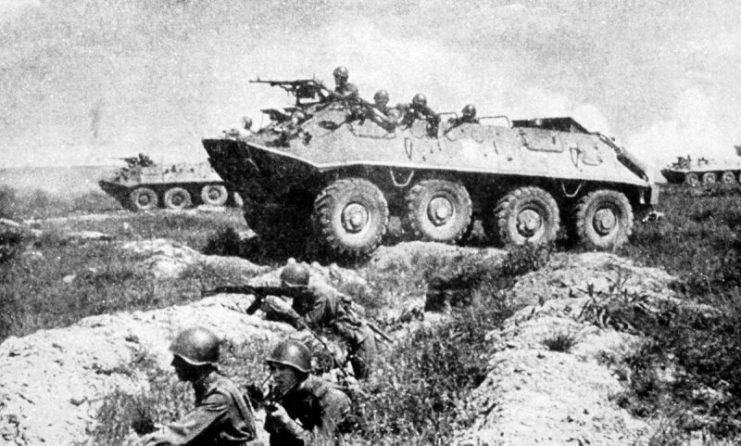
As usual, the driver and commander sat in the front of the vehicle, with 12 to 16 infantrymen behind them. As with the BTR-50, the engine was at the rear, and this meant that troops had to dismount through hatches in the roof. This made it easier to prepare for river crossings, but harder for the soldiers to get out and into action.
A varying number and type of weapon mounts and firing ports let the infantry fight from inside the vehicle. Some versions even had a machine gun turret near the front.
BTR-70
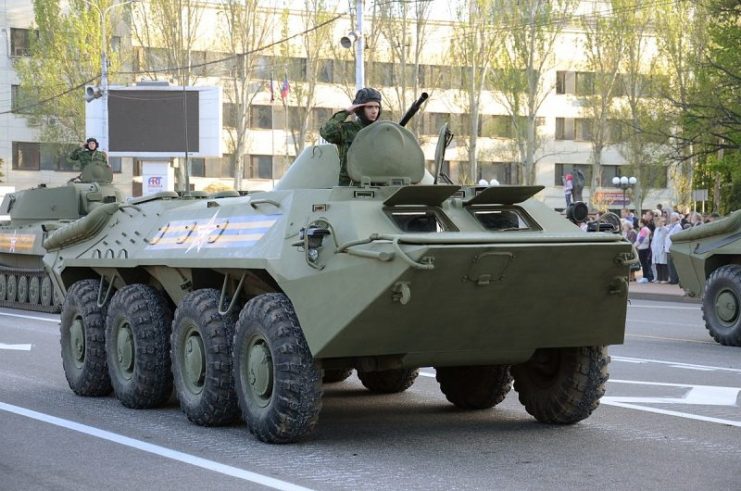
First produced in 1972, the BTR-70 was similar to one of the variants of the BTR-60, with the same layout and a machine gun turret. Significant changes included the installation of doors on the sides so that troops could more safely and easily get in and out of the vehicle.
Thought was put into making the BTR-70 tougher than its predecessors. The armor on the front was thicker and there was extra protection for the front pair of wheels.
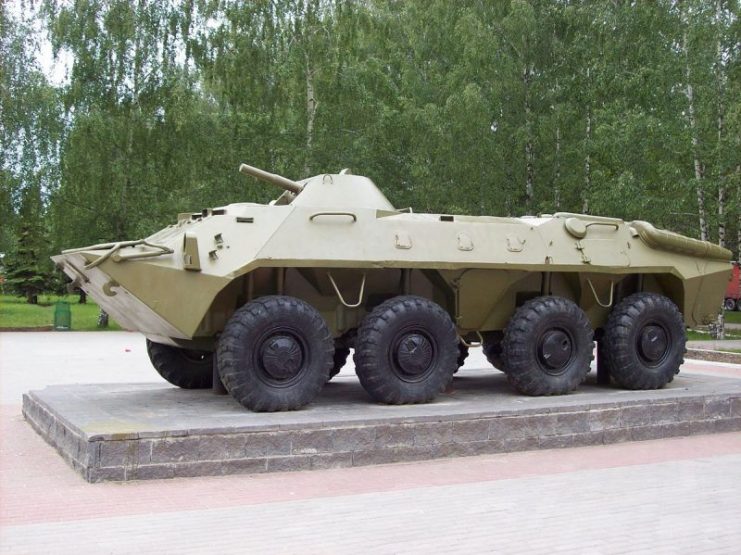
Like other Soviet vehicles of the era, the BTR-70 had equipment not available in the early days of the Cold War. This included nuclear, biological, and chemical (NBC) protection and infra-red equipment for night driving.
The BTR-70 saw service in Afghanistan. The experience there led to the development of the BTR-70M variant, with six smoke grenade launchers, an improved turret, extra firing ports, and brackets for extra armor.
BTR-D
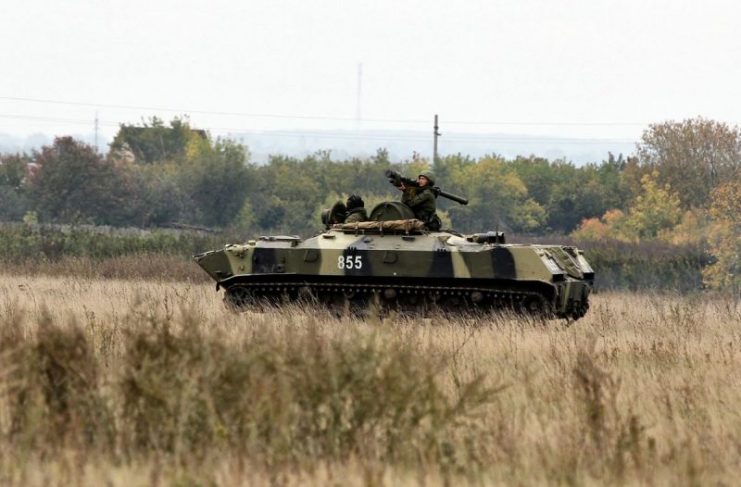
Based on the BMD-1 infantry fighting vehicle, the BTR-D was an APC for airborne forces. Its welded aluminum hull made it lighter than steel vehicles while still providing effective protection for the men inside. It entered service in the mid-1970s.
The driver sat in the center front position, with an infantryman operating a machine gun to each side of him and ten more troopers in the rear. Rear doors provided the soldiers with an easy exit, while smoke grenade launchers created cover for them.
BTR-80
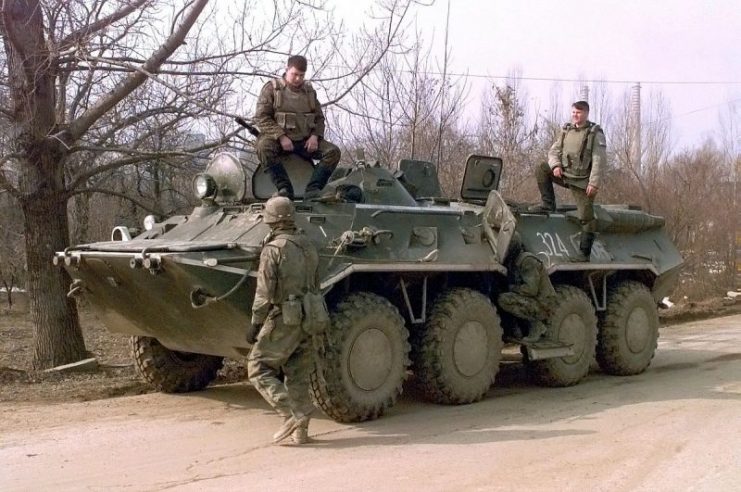
The next in the BTR- series of vehicles, the BTR-80 entered production in 1984. It had a V8 diesel engine instead of the twin petrol engines of its predecessors. This led to greater speed and range of travel, as well as improving the vehicle’s survivability.
The BTR-80 kept the turret from the BTR-70M, but with greater elevation. This allowed it to attack high ground and helicopters.
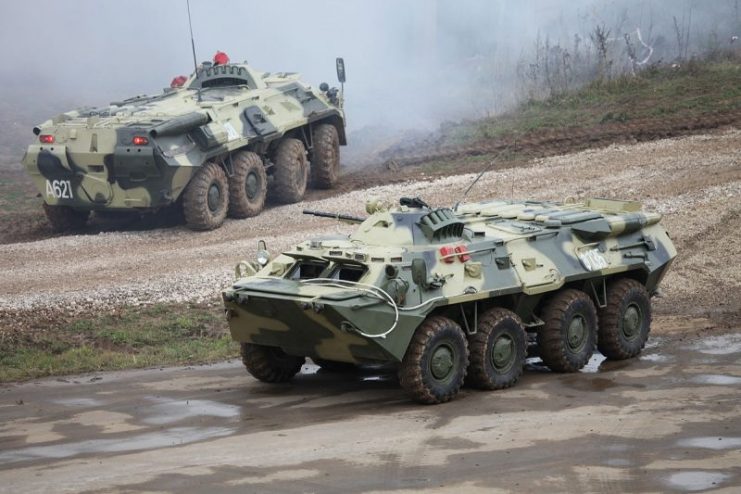
This vehicle was made more user-friendly for the troops it carried. Larger side doors and better firing ports meant that the infantry were more effective, both at fighting from the vehicle and at dismounting for combat.
The BTR-80 was a remarkably tough vehicle. It could hit an anti-tank mine, only lose one wheel, and keep going on the other seven.
